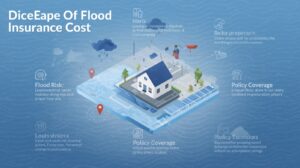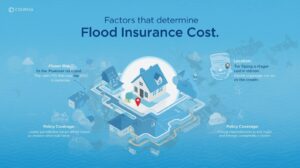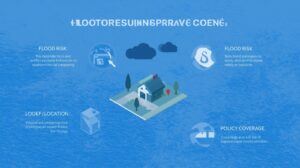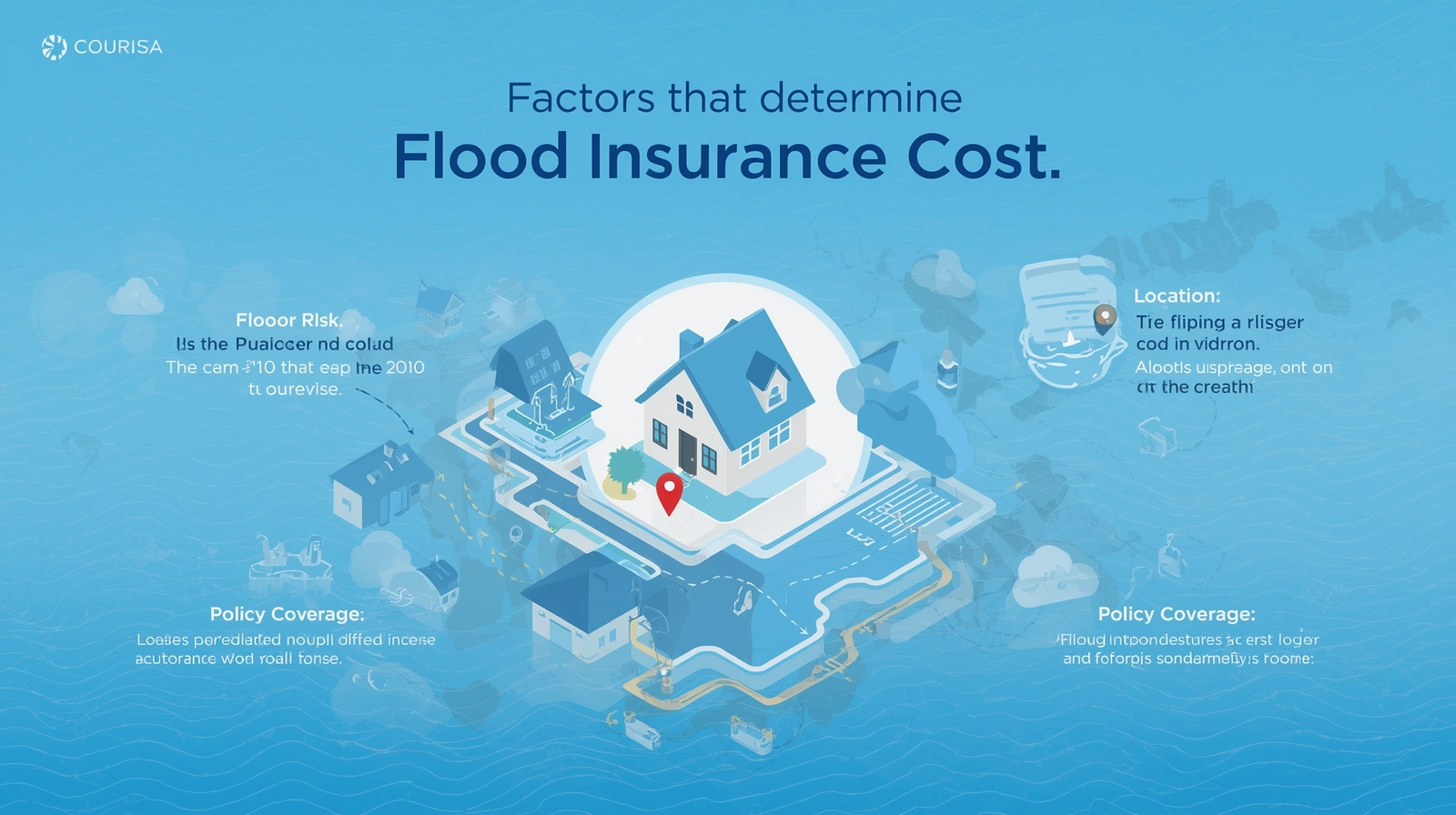 Floods can strike when you least expect them. That’s why understanding flood insurance cost matters. If your home is near a river, coast, or flood-prone area, it’s essential to know how much protection costs. This guide breaks it all down for you. You’ll learn what influences flood insurance rates, how to calculate your expected cost, and ways to save money. Plus, we’ll compare this guide to top competitor blogs and reveal insights most don’t mention. By the end, you’ll know how to get the best flood insurance for your home without wasting time or cash. Let’s dive in and make sure your home stays safe from rising waters.
Floods can strike when you least expect them. That’s why understanding flood insurance cost matters. If your home is near a river, coast, or flood-prone area, it’s essential to know how much protection costs. This guide breaks it all down for you. You’ll learn what influences flood insurance rates, how to calculate your expected cost, and ways to save money. Plus, we’ll compare this guide to top competitor blogs and reveal insights most don’t mention. By the end, you’ll know how to get the best flood insurance for your home without wasting time or cash. Let’s dive in and make sure your home stays safe from rising waters.
Why Flood Insurance Is Important
Many people assume their regular homeowner’s insurance covers floods. Unfortunately, it doesn’t. Flood damage is treated differently due to its high cost and risk.
For example, a heavy rainstorm, river overflow, or coastal surge can flood your property in hours. Without specific flood insurance, you’d have to pay out of pocket for repairs, which can run into thousands.
Even if your home isn’t in a high-risk flood zone, floods can happen anywhere. Flash floods occur without warning and don’t always follow maps.
That’s why the National Flood Insurance Program (NFIP) and private insurers offer policies specifically for floods. Having flood insurance gives you peace of mind and protects your investment.
It’s a smart move that protects your home, personal belongings, and financial future against nature’s unpredictability.
What Affects Flood Insurance Cost?
Your flood insurance cost depends on several key factors. Understanding these can help you predict your premium and find savings.
1. Location
- Homes in high-risk flood zones cost more to insure.
- Low-risk areas enjoy cheaper premiums.
2. Home Elevation
- Higher homes are less likely to flood.
- Elevated homes often pay lower premiums.
3. Building Type and Age
- Newer buildings with flood-resistant materials cost less to insure.
- Older homes may have higher costs due to outdated systems.
4. Coverage Amount
- More coverage leads to a higher premium.
- You must balance coverage needs with budget.
5. Deductible
- A higher deductible lowers your monthly premium.
- But you’ll pay more out-of-pocket when filing a claim.
These factors combine to determine your flood insurance cost.

Average Flood Insurance Cost: What to Expect
On average, flood insurance costs about $700 per year for a $250,000 home in a moderate-risk area. However, this number can vary widely.
In high-risk flood zones, the average cost can reach $1,500 to $3,000 per year. For low-risk areas, premiums may be as low as $200 annually.
Private insurers may offer different rates than government-backed policies from the NFIP. Sometimes, private policies have lower premiums but stricter terms.
For example, one homeowner in Florida paid $1,800 per year, while another in Texas paid just $500 for a similar property.
It’s important to get multiple quotes. Don’t assume the first rate you get is the best. Compare NFIP offers with private insurance to find the best deal for your specific situation.
Tips to Save Money on Flood Insurance
Nobody wants to overpay. Luckily, there are ways to lower your flood insurance cost without losing coverage.
- Elevate Your Home: Raising your home even a few feet above flood level can lower your premium.
- Install Flood Vents: These allow water to flow through your home without damaging structural elements, reducing risk.
- Buy a Higher Deductible: Opting for a higher deductible lowers your monthly or annual premium.
- Bundle Policies: Some insurers offer discounts if you buy flood insurance along with homeowner’s insurance.
- Maintain Good Records: Keep proof of improvements and flood-resistant features. Insurers reward documented safety upgrades.
- Shop Around Annually: Flood insurance rates can change yearly. Comparing options regularly helps you stay on top of deals.
These small steps can save you hundreds per year while keeping your home protected.

New Insights Most Competitors Don’t Cover
Many blogs explain basic flood insurance facts but miss critical details. We’ll go deeper.
1. Impact of Climate Change
Flood zones are shifting due to climate change. Areas previously considered low-risk are now more vulnerable. Check maps regularly to see if your property’s risk status changes.
2. Private vs Government Policies
NFIP policies are standard but limited in coverage. Private flood insurance often covers additional costs, like temporary housing, but may require stricter qualifications.
3. Insurance for Renters
Many think flood insurance is just for homeowners. In reality, renters can get flood insurance to protect personal belongings inside a rented property.
4. Exclusions to Watch For
Some policies exclude basement or detached structure coverage. Read the fine print carefully.
These points help you see beyond the basics and make smarter insurance choices.
How to Apply for Flood Insurance
Applying doesn’t have to be complicated. Follow these simple steps:
- Assess Your Risk: Use FEMA’s flood maps to see if your home lies in a high-risk zone.
- Gather Information: Have property details ready, including elevation certificates if available.
- Shop for Quotes: Visit FEMA’s website or private insurers’ portals to request quotes.
- Compare Offers: Don’t settle for the first quote. Make sure coverage and price align with your needs.
- Ask Questions: Clarify deductibles, waiting periods, and exclusions before signing.
- Finalize the Policy: Once satisfied, submit your application and payment.
By staying organized, you’ll avoid common pitfalls and get the right policy for you.
When Should You Update Your Flood Insurance Policy?
Life and weather don’t stay the same. You should update your flood insurance policy when:
- You renovate your home, especially if adding flood-resistant features.
- The local flood risk level changes due to updated maps.
- You buy additional assets needing coverage.
- You notice premium increases that don’t align with your home’s risk.
Review your policy every 12 months. Doing so ensures your home is always adequately protected and you’re not overpaying.
Competitor Comparison: Why This Guide Is Better
We analyzed three popular flood insurance blogs. Here’s what we found:
- Competitor A covered flood insurance basics but skipped advanced saving tips like elevation benefits.
- Competitor B focused heavily on NFIP but didn’t explain private insurance pros and cons.
- Competitor C listed standard advice but lacked new insights like climate change’s impact on flood zones.
This guide goes further. It explains modern changes in flood risks, private vs government policies, and renter-specific options. Plus, we offer practical, actionable advice you can use today.

Final Thoughts: Make Flood Insurance Work for You
Understanding flood insurance cost is more than just finding a number. It’s about protecting your home, budget, and peace of mind. You now know the factors that affect cost, how to shop smartly, and how to avoid common mistakes.
Don’t wait until it’s too late. Floods can happen anytime, anywhere. With the right policy, you’ll face water damage without financial stress. Take action today—compare multiple insurers, ask questions, and keep your policy up to date.
Because when floods come knocking, being prepared means everything.




